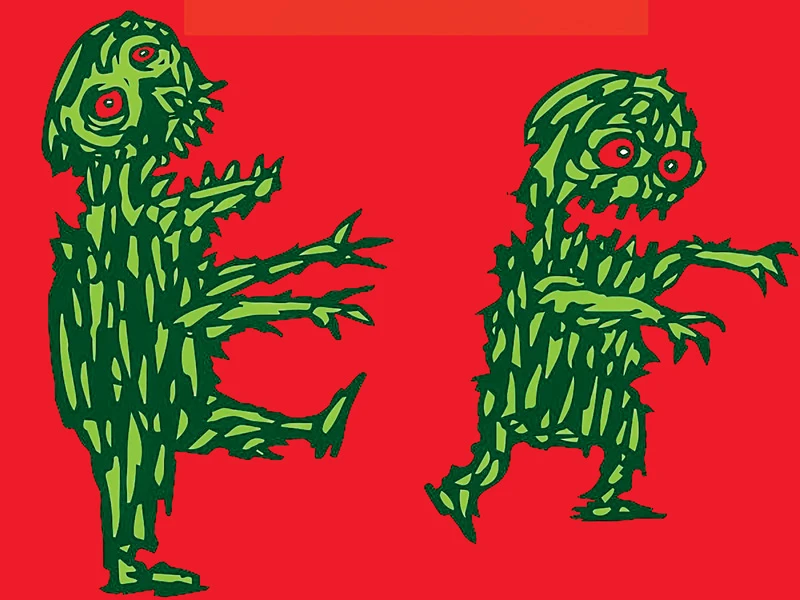
Unprofitable businesses
A zombie company is one that is unable to pay off its debts from its existing income and therefore continues to run unprofitably. This causes a strain on the economy unless they are liquidated or taken over. The term "zombie company" is not new. It first originated in Japan in the 1990s, during the post-bubble period, when banks supported unprofitable businesses, and the Japanese government also moved to support this policy to hold up businesses and prevent them from going under.
According to calculations made in 2012 by experts Nakamura Junichi, from the Hitotsubashi University, and Fukuda Shinichi, from the University of Tokyo, the consequences of the above policy is that in 2001 a number of companies marked as zombie companies accounted for more than 15% of all listed companies. In order to resolve this crisis, the Japanese government was forced to bring in radical reforms in the accounting law and supervision policies of banks. This resulted in the proportion of zombie companies decreasing significantly, with many companies even showing better performance.
Statistics from the Bank for International Settlements (BIS) show that in rich developed countries, much before the Covid-19 pandemic struck the world, one out of every six listed companies was actually a zombie company, and this ratio had been steadily increasing. These zombie companies did not have enough revenue to cover debt payments for three consecutive years and were subsequently undervalued.
Unproductive for economy
In order to resolve problems in zombie companies, banks can declare bankruptcy and thereby recover back some capital through restructuring, selling or liquidating assets of such zombie companies. However, instead of totally destroying a zombie company, banks often choose to lend further support and bail out these companies, who borrow new loans to repay old debts and continue to operate under great stress. This is the consequence of loosening monetary policy.
Banks in a bad financial situation, due to low interest rates and poor profitability, are more willing to support zombie companies to benefit themselves, by eliminating losses from bad debts. Furthermore, banks have more reason to do this if the bankruptcy recovery process is complicated and laborious for all parties, especially for small businesses. These are situations that also create zombie companies.
Most zombie companies do not need to be profitable companies, as they are still able to pay their employees and run day to day operations. However, zombie companies are a constant strain on any country’s economy. The existence of such companies is no different from vegetative pathologists, and they may even prevent new companies from entering the market. Employees are tied to such companies that have no future, and when employees consider leaving them, it is difficult for them to find another job. This proves unproductive for the economy.
In addition, zombie companies invest less and also do not spend on innovation. According to the Organization for Economic Cooperation and Development (OECD), industries with a high zombie ratio make it difficult for healthy companies to attract investment capital. Profit margin in healthy companies is affected by the inability of zombie companies to make a profit, and thereby motivation to investment is greatly reduced. A one percent increase in the market share of a zombie company reduces the capital expenditure in a healthy company by 1%, and also reduces productivity by 0.3%. The stagnation within a zombie company lowers the quality of other products and services.
Uncertainty post-pandemic
The ongoing Covid-19 pandemic is most conducive to the creation of more and more zombie companies. It is easier for companies now to access new credit and avail of more unconditional loan policies. This makes it hard for creditors to promote restructuring or liquidate unprofitable businesses. Moreover, companies also issue high-yield bonds as a way to raise capital at low cost as they try to hold on until the economic situation improves. The total value of high-interest bond issues for the last eight months of 2020 in the USA reached USD 292 bn, higher than the whole year of 2019. These bonds were acquired by the United States Federal Reserve (Fed) to implement unprecedented relief policies.
In addition, salary support policies, such as in the German Kurzarbeitergeld program, and lending, can all contribute to an increase in the number of zombie companies, because they help in keeping such companies afloat irrespective of profits. However, these companies are like comatose patients who can only survive with the help of ventilator machines. This risk can be seen in bankruptcy statistics in most countries. Contrary to forecasts by BIS that the total number of bankrupt companies will increase to almost 40% in 2020, some countries have reduced the numbers as compared to the same period last year. For instance, in August, Germany decreased by 40%, and the USA decreased by nearly 30%.
Even if the economic situation improves post-pandemic, several companies will not be able to escape being termed zombie companies. The probability that a company will become a zombie again is 17%, compared to 5% in 1995. Irrespective, zombie companies will always be inferior to healthy robust running companies in all aspects, in profitability, productivity, investments, as well as in growth and job creation.




















